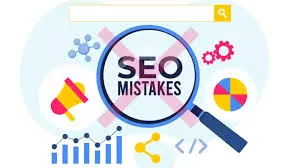SEO for Educational Institutes Common Mistakes You Should Avoid

The digital space has become a primary source of information for learners and parents looking for reliable education options. If an institute is not visible online, it risks losing potential students to competitors. That is why SEO for educational institutes is no longer optional—it’s essential. But while many administrators try to apply SEO strategies, they often make mistakes that reduce their chances of success. In this article, we’ll discuss the most common SEO mistakes that educational institutes make and how you can avoid them.
Why SEO Matters for Educational Institutes
Search engines are often the first place people turn when researching learning opportunities. A well-optimised website allows an institute to attract more students, build trust, and showcase its programs effectively. Without SEO, even the most outstanding institute can remain hidden online. Simply having a website is not enough—strategic optimisation ensures it reaches the right audience.
Common SEO Mistakes Educational Institutes Should Avoid
Ignoring Keyword Research
One of the biggest mistakes in SEO for educational institutes is failing to conduct proper keyword research. Many websites either use generic terms or stuff keywords unnaturally into their content. This approach confuses search engines and frustrates readers. Instead, institutes should identify what their target audience is actually searching for—phrases like “online courses near me” or “best learning programs for kids”—and weave them naturally into the content.
Poor Website Structure and Navigation
Visitors expect an institute’s website to be easy to navigate. A complicated menu or cluttered design not only turns people away but also harms SEO. Search engines favour sites with clear structures and logical navigation. Organising pages into categories, using descriptive headings, and ensuring fast-loading pages can make a massive difference.
Overlooking Mobile Optimisation
Today’s students and parents frequently use smartphones to research education opportunities. If a site isn’t mobile-friendly, it’s losing potential visitors every day. Mobile optimisation is not just about design; it also affects SEO rankings. A responsive layout, fast loading speed, and easy-to-read text on smaller screens are all critical.
Neglecting Local SEO
Most institutes target students from specific regions. Failing to apply local SEO techniques means missing out on nearby prospects. Adding location-based keywords, creating a Google Business Profile, and ensuring consistent name-address-phone details across platforms are essential steps. Local SEO improves both search rankings and trustworthiness.
Weak Content Strategy
Many institutes make the mistake of publishing outdated or minimal content. SEO thrives on fresh, informative, and engaging material. Blog posts, FAQs, and guides not only answer questions but also improve rankings. For example, an article on “How to Choose the Right Learning Path” can bring consistent traffic and position the institute as a trusted source of information.
Ignoring Technical SEO
Technical SEO plays a vital role in how well a site performs in search results. Issues such as broken links, missing alt tags, duplicate pages, or slow site speed can damage rankings. Institutes often focus only on content and overlook these aspects. Regular site audits and fixing errors help maintain strong SEO health.
Not Tracking SEO Performance
Another common mistake is failing to monitor progress. Many institutes launch SEO campaigns but never track results. Tools like Google Analytics and Search Console provide critical information about what’s working and what isn’t. Without tracking, there’s no way to adjust strategies for better performance.
Best Practices to Improve SEO for Educational Institutes
Publish High-Quality Content Regularly
Posting useful content consistently builds authority. Guides, career advice articles, and learning tips keep the website active and give search engines reasons to rank it higher.
Focus on On-Page Optimisation
Using headings properly, optimising meta descriptions, and adding alt text for images make a website more SEO-friendly. Even small improvements here can boost visibility significantly.
Build Quality Backlinks
Getting backlinks from relevant and trustworthy websites signals credibility to search engines. Institutes should aim for collaborations, guest articles, or mentions in niche blogs rather than chasing random links.
Prioritise User Experience
SEO is not just about pleasing algorithms—it’s about creating a positive experience for visitors. Fast loading speed, clear calls to action, and simple design help users find what they need quickly, keeping them engaged longer.
SEO for Educational Institutes: Long-Term Growth
Unlike paid ads, SEO provides sustainable results. Once an institute’s website ranks well, it can enjoy long-term visibility without ongoing advertising costs. This makes SEO one of the most cost-effective marketing strategies available. However, success comes only by avoiding common mistakes and applying strategies consistently.
Conclusion
Building an online presence requires more than just having a website. SEO for educational institutes is a vital tool to attract the right audience and build credibility. By avoiding common mistakes like ignoring keyword research, neglecting mobile optimisation, or skipping local SEO, institutes can secure better rankings and long-term growth. A strong SEO foundation ensures that your institute doesn’t just exist online—it stands out and thrives.






